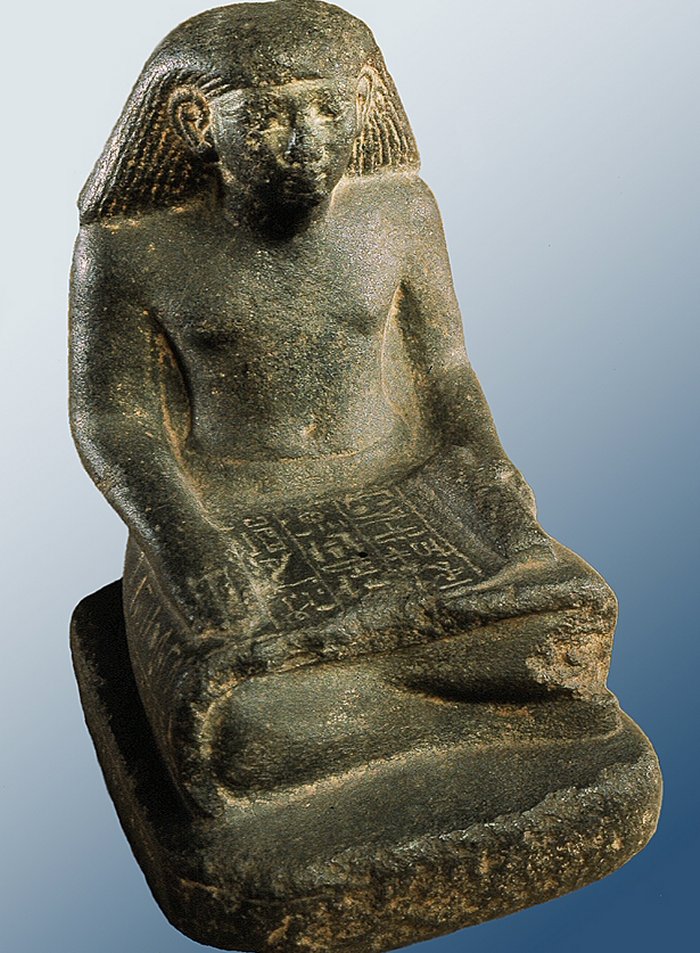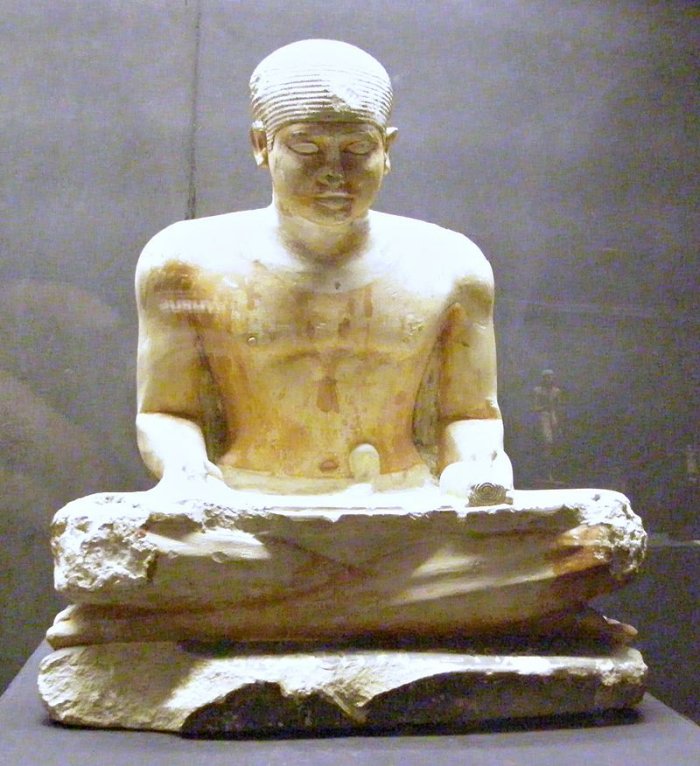Scribes: One Of The Noblest And Highly Recommended Professions In Ancient Egypt
A. Sutherland - AncientPages.com - In ancient Egypt, there was no public school system. In consequence, the average Egyptian could neither read nor write. It is estimated that less than one percent of Egyptians - at least during the Old Kingdom - were literate.
This early New Kingdom statue commemorates the scribe Minnakht ("Strength of Min") and demonstrates how ancient scribes read papyri – in a seated position on the floor with the text on their lap. Image credit: Walters Art Museum - Public Domain
Therefore, scribes were widely needed in the country. They represented the largest group of workers (after farmers), including thousands of officials, individuals hired to handle various accounts, official correspondence for large estates, and many freelancers.
Successful scribes never had to do manual labor as others, and society respected them widely.
Sources about ancient Egyptian scribes are known not only from tombs and depictions but also papyri, various seals, and graffiti.
At the ancient site in Gebelein, known for its cemetery, where archeological finds stretching from the Predynastic Period to the Middle Kingdom have been found, and among them, a beautiful example of a scribe's wooden box containing lumps of black and red ink, papyri, reeds, and a mortar (dated to the fourth dynasty).
Much of what we know today about ancient Egypt comes from the country's scribes, one of the most valuable professionals educated in writing. This writing included hieroglyphics, hieratic scripts, and the demotic script (the first millennium BC), mainly used as shorthand for commerce and arithmetic.
Thoth was the god credited with the invention of writing by the ancient Egyptians. He was the scribe of the gods who kept knowledge of scientific and moral laws. Ancient Egyptian scribes and officials left for us, ordinary people, excellent knowledge about the country's political, administrative, and economic activities due to the records, books, and inscriptions.
Thanks to the scribes, all of Egypt's social classes and representatives of other nationalities were mentioned in various documents.
Not Everyone Could Become A Scribe
To become a scribe, attending a particular school for scribes was needed. You would learn how to read and write hieroglyphics and hieratic scripts at this school. Usually, according to family tradition, the children of scribes became scribes. They were brought up in the same scribal tradition, sent to school, and inherited their fathers' positions after entering the civil service.
Statue of a scribe of the 5th dynasty, Museum at the necropolis of Saqqara; Catalogue Generale no. 63; statue belonged to a person called Ptahshepses and was found in Saqqara mastaba C10; numbering according to Maspero. Image credit: Harald Gaertner - CC BY-SA 3.0
Also, the sons of higher officials and sometimes even farmers' children and the sons of artisans could attend local temples for instruction in letters.
Long Hard Work And Much Studies To Become A Scribe
It was hard work that usually took four to five years to go through scribe school, where all scholars were male. The scribe needed writing reed brushes dipped in red and black ink for daily work.
Most often, a professional scribe wrote on papyrus. However, the scribes could not do papyrus exercises during the studies because it was costly material.
Early in the morning, each scribe came to his work with a small basket containing some bread and beer and returned home late afternoon. The students had to confront and learn many complicated scripts, including various signs. At first, they spent plenty of time acquainting themselves with hieroglyphic symbols by repeatedly copying them onto old pottery fragments, limestone flakes, or wood boards with replaceable surfaces until they remembered them perfectly.
Black ink was used for the body of a text, and red to mark chapter headings or significant phrases.
Later, after learning all the necessary basics, the student could begin copying onto papyrus, and yet, the scribe's other skills were needed though they were not easily mastered.
In the "Daily Life of the Ancient Egyptians" by Bob Brier, and A. Hoyt Hobbs, we read:
"In addition to hieroglyphs - the picture symbols we most often associate with Egyptian writing - a more cursive form called hieratic was employed for handwriting, and a more abbreviated version called demotic was used for quick notes. When all three symbol systems had been committed to memory, a pupil who showed aptitude could move to advanced courses in mathematics and basic building practices, both of which were taught through practical examples rather than abstraction rules..."
Once again, it is important to stress that these studies were complex and, first of all, very boring for many children.
Scribes Had Many Privileges
Despite difficulties in their studies, however, many students successfully graduated and could become professional scribes with many privileges. As a scribe, a young man could enjoy opportunities for advancement. Specific orders of Egyptian priests required scribal skills, as did the quartermaster corps of the army and many government jobs
Scribes were considered part of the royal court, were not enrolled for compulsory military service, and did not pay taxes. They were also free from the heavy manual labor and worked with painters and artisans who decorated reliefs and other building works with scenes, prominent figures, or hieroglyphic text.
Egyptian scribes also were extremely busy copying books of the dead for thousands of customers interested in immortality. Such copies did not always represent good quality; many scrolls (incredibly different spells) were beautifully decorated with colored paintings. Others were brief with no illustrations, but people paid for them, and generally, all the scribes' customers were satisfied.
Written by – A. Sutherland - AncientPages.com Senior Staff Writer
Updated on March 14, 2023
Copyright © AncientPages.com All rights reserved. This material may not be published, broadcast, rewritten or redistributed in whole or part without the express written permission of AncientPages.com
Expand for referencesReferences:
Rawlinson G. "Ancient Egypt"
Williams, R. J. Scribal Training in Ancient Egypt
More From Ancient Pages
-
 Archaeologists Uncover Secrets Of ‘Vallø Borgring’ Viking Age Circular Fortress
Archaeology | Oct 11, 2015
Archaeologists Uncover Secrets Of ‘Vallø Borgring’ Viking Age Circular Fortress
Archaeology | Oct 11, 2015 -
 Fascinating Accounts Of Incredible Vehicles, Cosmic Cities In Vedic Literature
Civilizations | Oct 6, 2015
Fascinating Accounts Of Incredible Vehicles, Cosmic Cities In Vedic Literature
Civilizations | Oct 6, 2015 -
 Anchor Church Caves – Has The Home Of Anglo-Saxon King Eardwulf And Saint Hardulph Been Found?
Archaeology | Jul 23, 2021
Anchor Church Caves – Has The Home Of Anglo-Saxon King Eardwulf And Saint Hardulph Been Found?
Archaeology | Jul 23, 2021 -
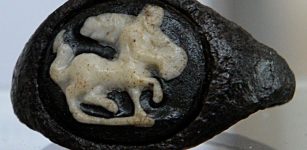 Roman Treasures Unearthed At Ancient Site Of Tiel, Netherlands
Archaeology | Apr 2, 2017
Roman Treasures Unearthed At Ancient Site Of Tiel, Netherlands
Archaeology | Apr 2, 2017 -
 Ruins Of Xunantunich – Mayan City That Once Flourished
Civilizations | Jan 12, 2022
Ruins Of Xunantunich – Mayan City That Once Flourished
Civilizations | Jan 12, 2022 -
 Very Rare Ancient Roman Horse Brooch Discovered In UK
Archaeology | Mar 7, 2020
Very Rare Ancient Roman Horse Brooch Discovered In UK
Archaeology | Mar 7, 2020 -
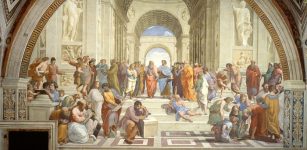 How Did The Renaissance Change Europe?
Ancient History Facts | Oct 10, 2019
How Did The Renaissance Change Europe?
Ancient History Facts | Oct 10, 2019 -
 51,000-Year-Old Bone Carving Shows Neanderthals Were Artistic Long Before Humans Arrived
Archaeology | Jul 6, 2021
51,000-Year-Old Bone Carving Shows Neanderthals Were Artistic Long Before Humans Arrived
Archaeology | Jul 6, 2021 -
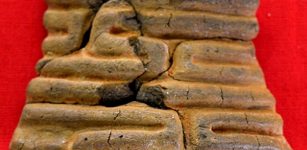 3,000-Year-Old Piece Of Pottery Unearthed On Okinawa Island, Japan
Archaeology | Feb 21, 2017
3,000-Year-Old Piece Of Pottery Unearthed On Okinawa Island, Japan
Archaeology | Feb 21, 2017 -
 Denisovan DNA Found In The Genome Of Oldest Human Fossil Discovered In Mongolia
Archaeology | Oct 30, 2020
Denisovan DNA Found In The Genome Of Oldest Human Fossil Discovered In Mongolia
Archaeology | Oct 30, 2020 -
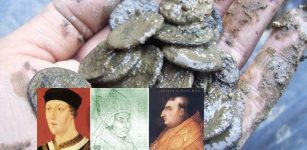 15th Century Cooking Pot With 500 Silver And Gold Coins Unearthed In Vianen, Netherlands
Archaeology | Mar 6, 2018
15th Century Cooking Pot With 500 Silver And Gold Coins Unearthed In Vianen, Netherlands
Archaeology | Mar 6, 2018 -
 Abu Dhabi Fossil Dunes May Have Inspired The Ancient Great Flood Story – Professor Says
Archaeology | Jul 10, 2022
Abu Dhabi Fossil Dunes May Have Inspired The Ancient Great Flood Story – Professor Says
Archaeology | Jul 10, 2022 -
 15 New Archaeological Finds Unearthed In Pre-Inca Ruins Of Tiwanaku, Bolivia
Artifacts | Jan 27, 2021
15 New Archaeological Finds Unearthed In Pre-Inca Ruins Of Tiwanaku, Bolivia
Artifacts | Jan 27, 2021 -
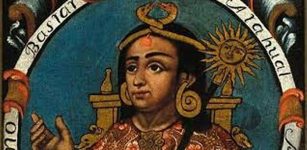 On This Day In History: Last Inca Emperor Atahualpa Captured By Francisco Pizarro – On Nov 16, 1532
News | Nov 16, 2016
On This Day In History: Last Inca Emperor Atahualpa Captured By Francisco Pizarro – On Nov 16, 1532
News | Nov 16, 2016 -
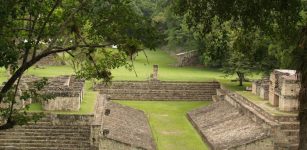 On This Day In History: First European Sights The Ruins Of Ancient Maya City Of Copán – On Mar 8, 1576
News | Mar 8, 2017
On This Day In History: First European Sights The Ruins Of Ancient Maya City Of Copán – On Mar 8, 1576
News | Mar 8, 2017 -
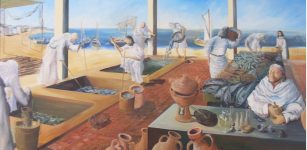 Mediterranean Hunter-Gatherers Relied On Marine Resources More Than Previously Thought
Archaeology | Feb 22, 2023
Mediterranean Hunter-Gatherers Relied On Marine Resources More Than Previously Thought
Archaeology | Feb 22, 2023 -
 Ancient Secrets Of The Amazon Jungle – The Man Who Stepped Into The Unknown Searching For The Lost City Of The Gods – Part 2
Featured Stories | Mar 5, 2019
Ancient Secrets Of The Amazon Jungle – The Man Who Stepped Into The Unknown Searching For The Lost City Of The Gods – Part 2
Featured Stories | Mar 5, 2019 -
 Oldest Human Remains From Puerto Rico Reveal A Complex Cultural Landscape Since 1800 BC
Archaeology | Apr 27, 2023
Oldest Human Remains From Puerto Rico Reveal A Complex Cultural Landscape Since 1800 BC
Archaeology | Apr 27, 2023 -
 Yōkai: Mysterious Interdimensional Force With Odd Abilities In Japanese Mythology
Featured Stories | May 15, 2017
Yōkai: Mysterious Interdimensional Force With Odd Abilities In Japanese Mythology
Featured Stories | May 15, 2017 -
 Cueva de Ardales – Rock Art Cave In Spain Was Used By Ancient Humans For More Than 50,000 Years
Archaeology | Jun 1, 2022
Cueva de Ardales – Rock Art Cave In Spain Was Used By Ancient Humans For More Than 50,000 Years
Archaeology | Jun 1, 2022

